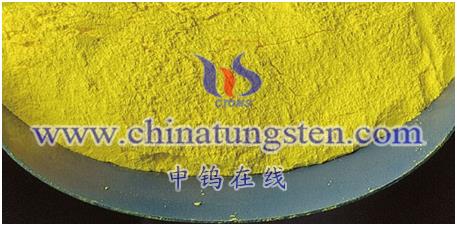The specific surface area of nano tungsten oxide can vary according to the size, shape and surface properties of the nanoparticles. Specific surface area refers to the surface area of nano-tungsten oxide particles per unit mass or unit volume. The specific surface area of common nano-tungsten oxide is usually between tens to hundreds of square meters per gram. The specific value will be affected by factors such as preparation method, particle shape, particle size distribution and crystal structure. Nano tungsten oxide has the advantages of high specific surface area, mainly in the following aspects:
Catalytic Activity
The high specific surface area provides more active surfaces and increases the chances of tungsten oxide contacting the reactants, thus improving the catalytic activity. Nano-tungsten oxide is widely used in catalytic reactions, such as redox reactions, dehydrogenation reactions, oxidation reactions, etc.
Adsorption Performance
The high specific surface area makes nano-tungsten oxide have a large adsorption capacity, which can absorb and store gas, liquid or other molecular substances. This has important implications in applications such as adsorption separation, gas sensing, and hydrogen storage.
Electrochemical Properties
The high specific surface area helps to improve the performance of nano-tungsten oxide in the electrochemical field. It can increase the interface area between the electrode and the electrolyte, facilitate charge transport and ion diffusion, and thus improve the efficiency of electrochemical energy storage and electrocatalytic reactions.
It should be noted that the specific surface area of nano-tungsten oxide is usually related to its particle size and shape. Smaller particles and more complex shapes generally result in larger specific surface areas. Therefore, when preparing and applying nano-tungsten oxide, it is necessary to comprehensively consider the influence of particle morphology and specific surface area on specific properties and applications.

If the particle size range is 1-100 nanometers, what is the specific surface area range of nano-nano tungsten trioxide?
For nano tungsten trioxide, the range of its specific surface area can be estimated according to the particle size range and particle shape. Since the specific surface area of nano-tungsten trioxide is affected by particle size, shape and crystal structure, the following is an estimated range:
For nano tungsten trioxide with a particle size range of 1-100 nm:
For spherical particles: the estimated specific surface area ranges from 10-100 m2/g.
For rod-shaped, plate-shaped or polyhedral particles: the estimated specific surface area ranges from 30-200 m2/g.
For particles with a porous structure: the range of estimated specific surface area can be larger, reaching 100-500 m2/g.
It should be noted that these values are for reference only and may vary according to specific preparation methods, experimental conditions and material properties. Accurate measurement of the specific surface area of nano-tungsten trioxide requires the use of specialized surface analysis techniques, such as specific nitrogen adsorption method (BET method) or gas adsorption analyzer for measurement. These techniques can provide more accurate specific surface area data and help evaluate the particle characteristics and application potential of nano-tungsten trioxide.

More details of tungsten oxide product, please visit website: tungsten-oxide.com
Please contact CHINATUNGSTEN for inquiry and order of tungsten oxide:
Email: sales@chinatungsten.com
Tel.: 86 592 5129595






